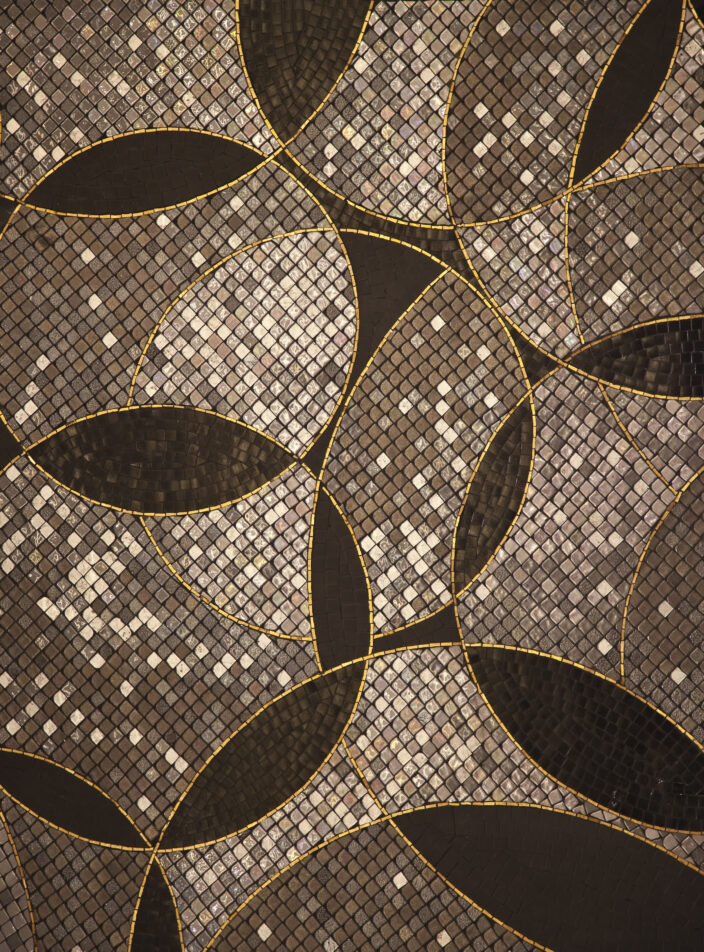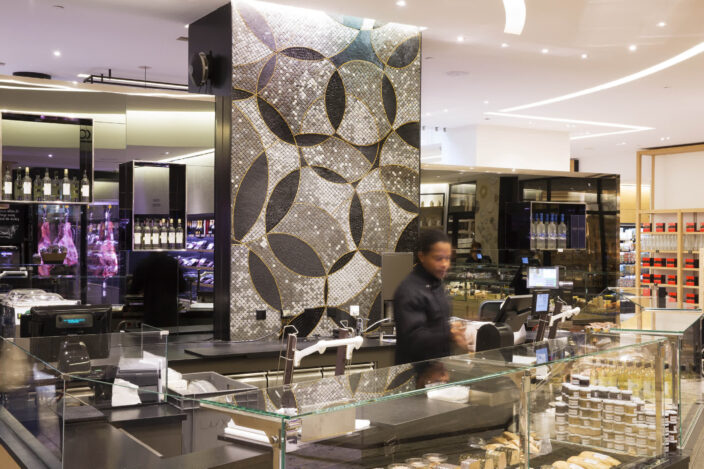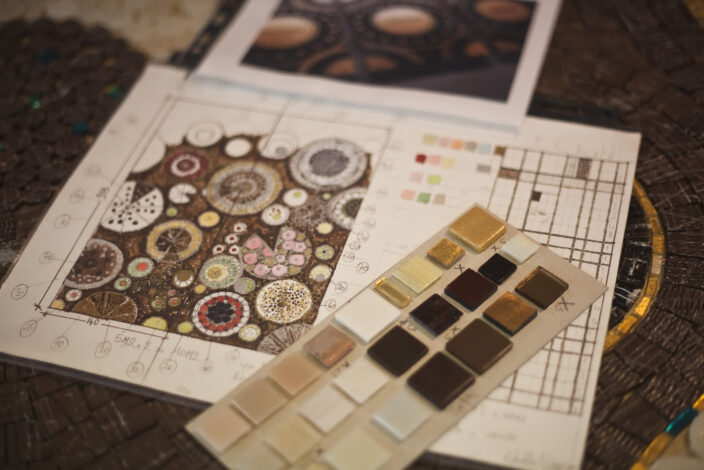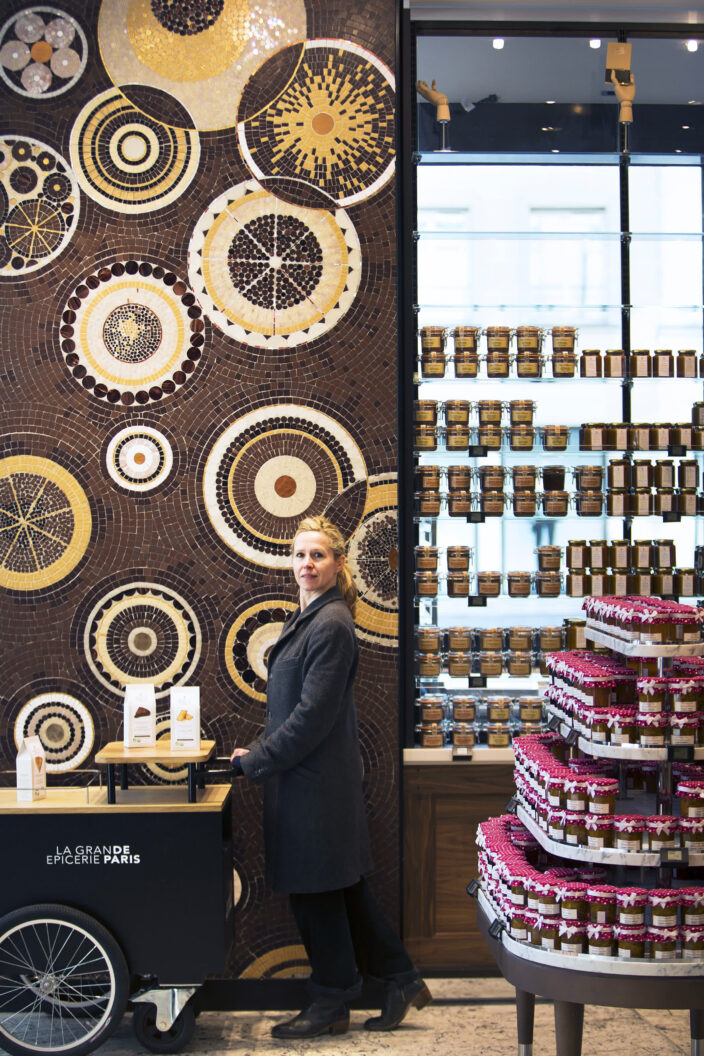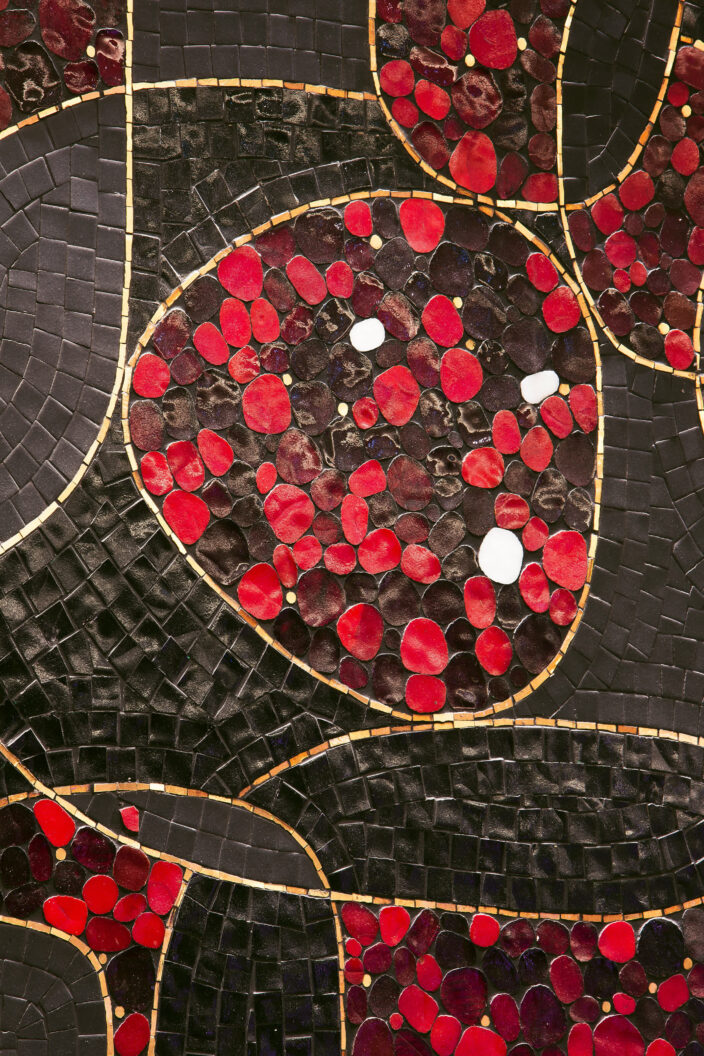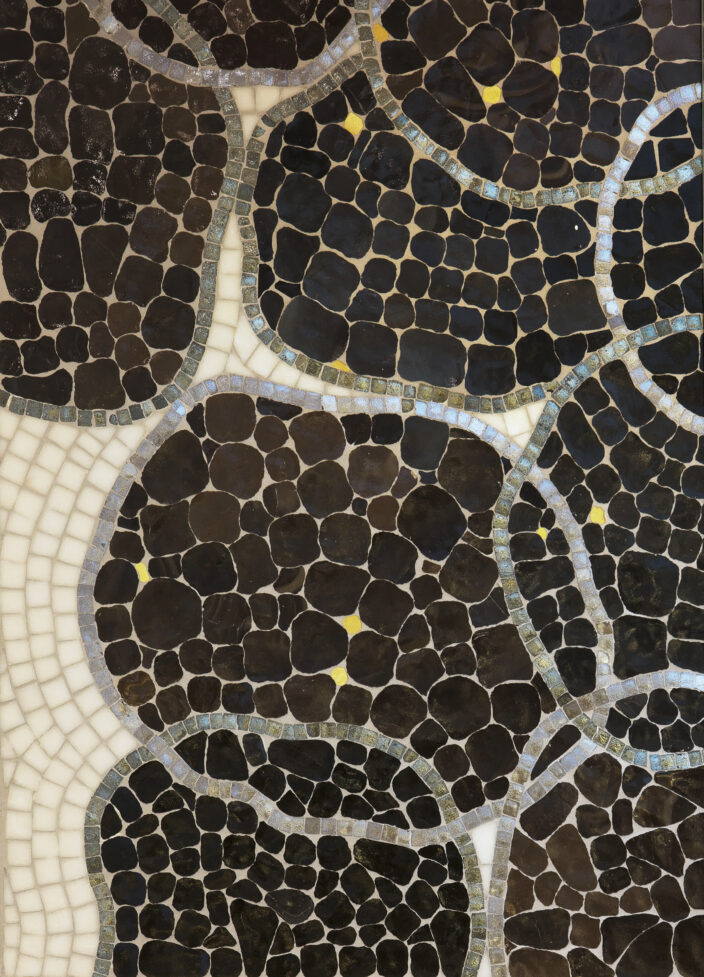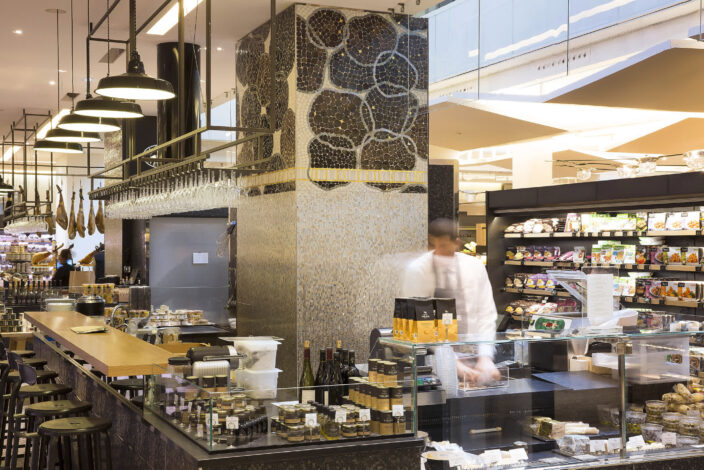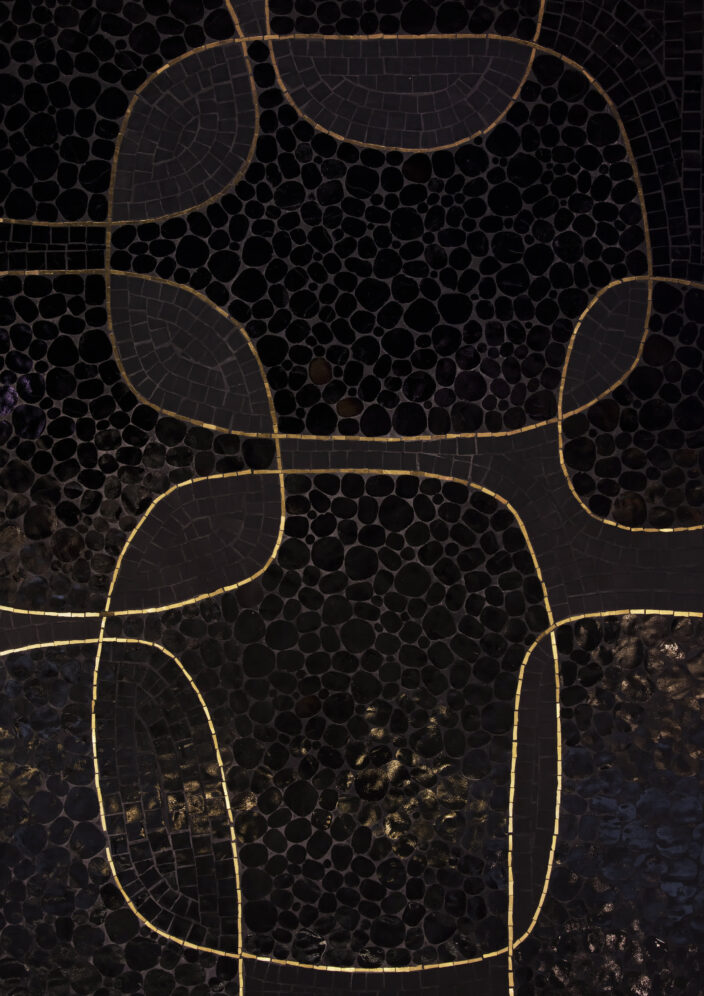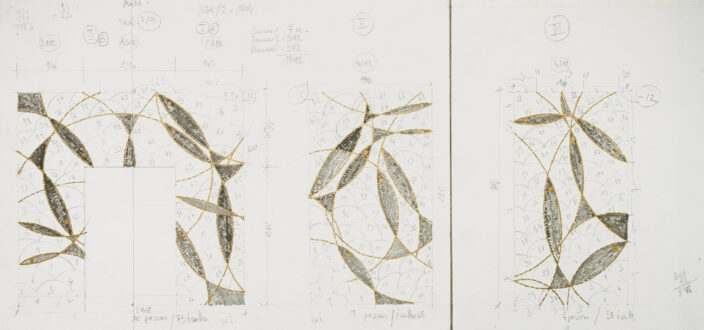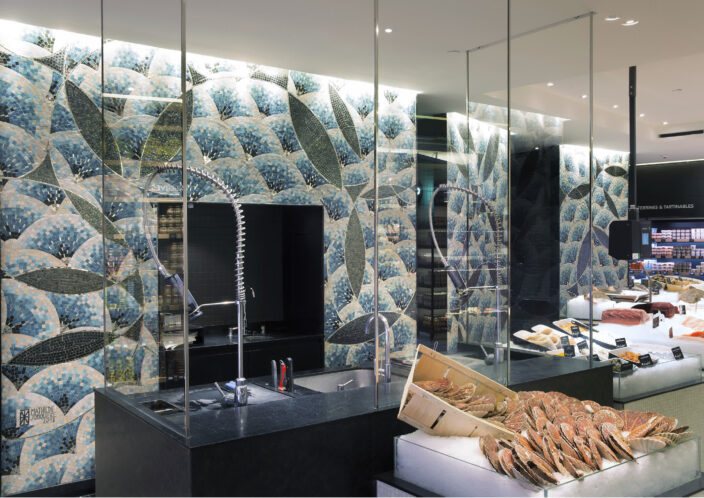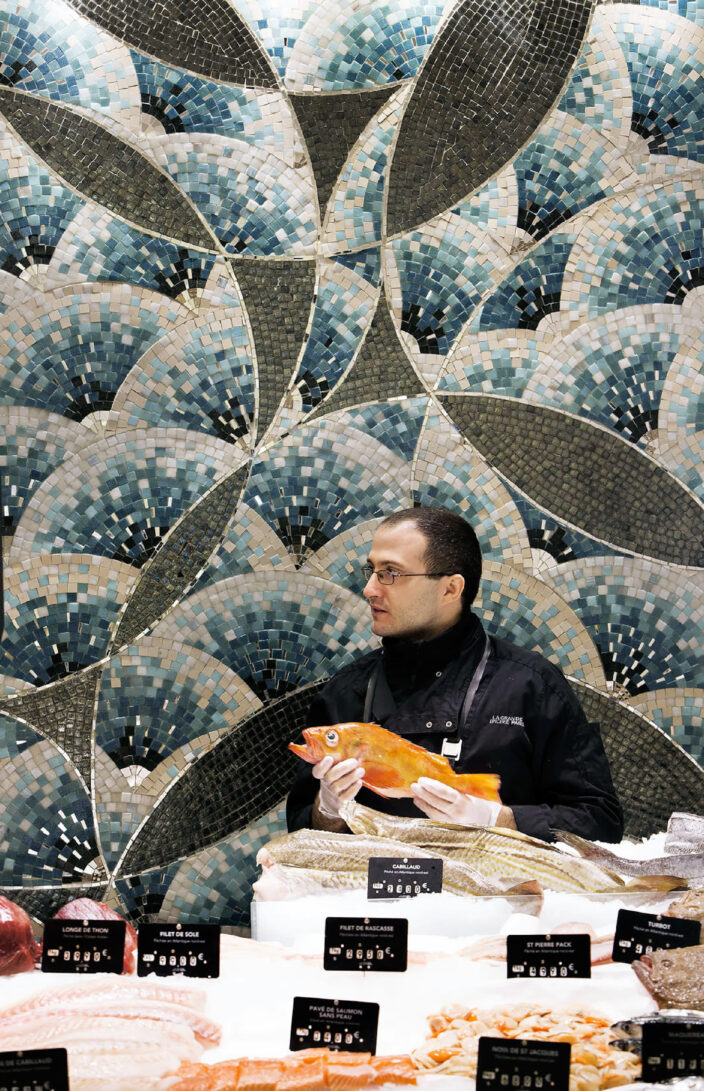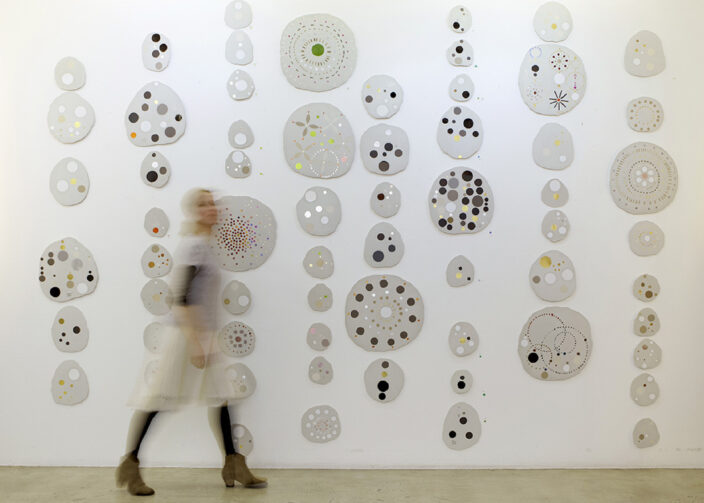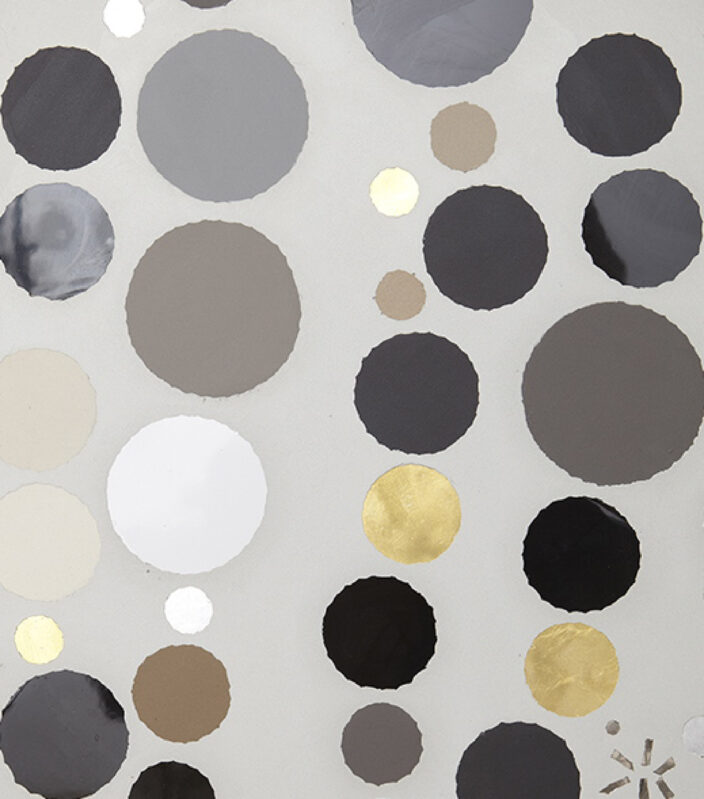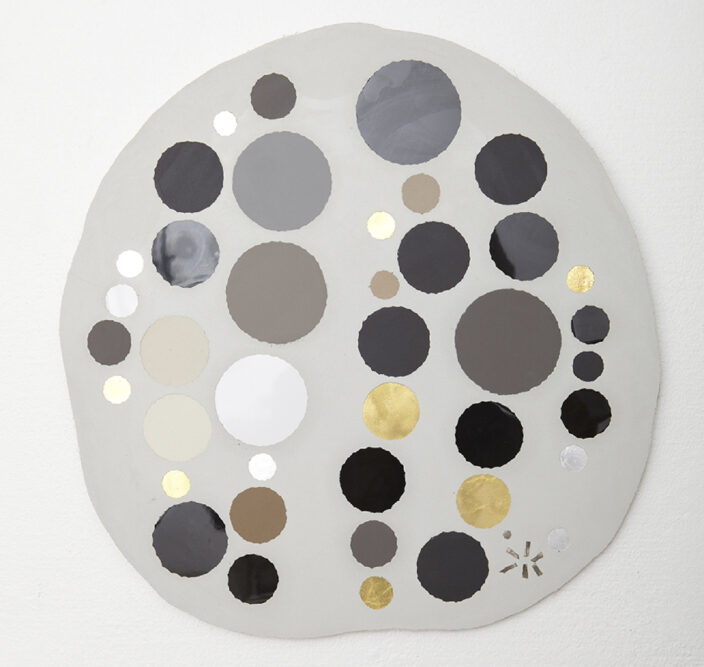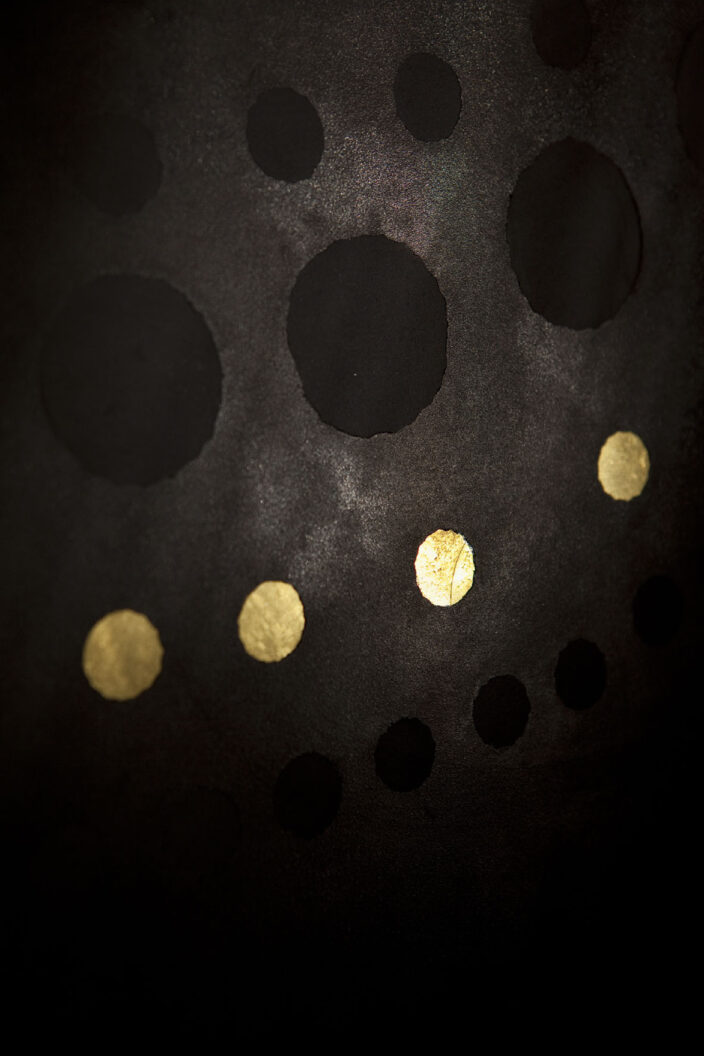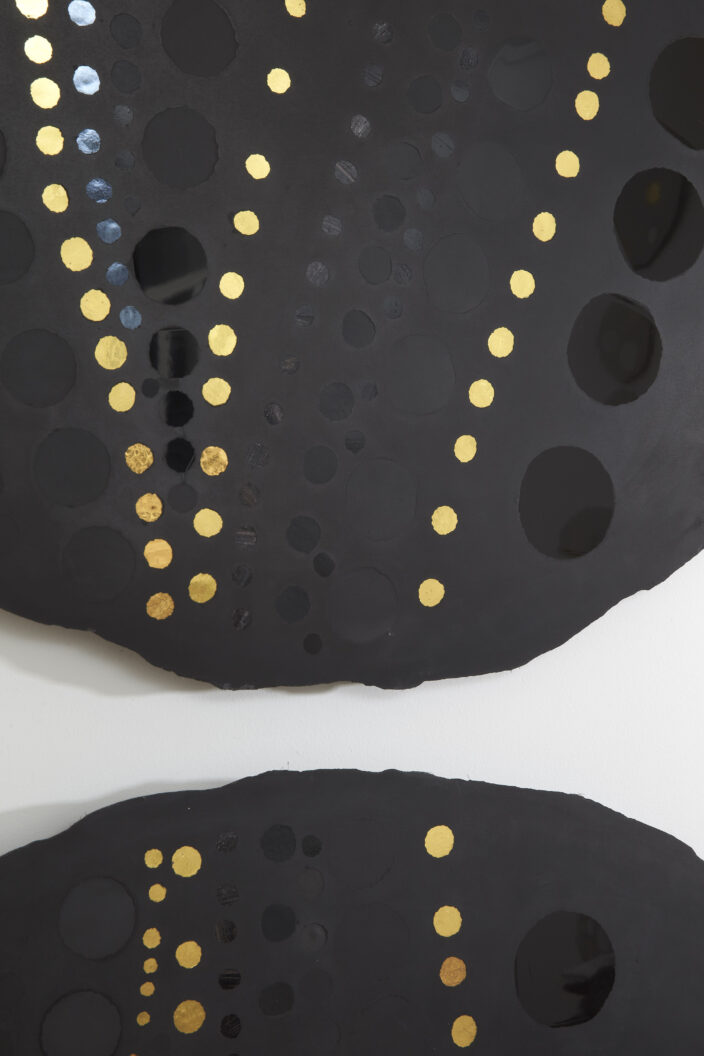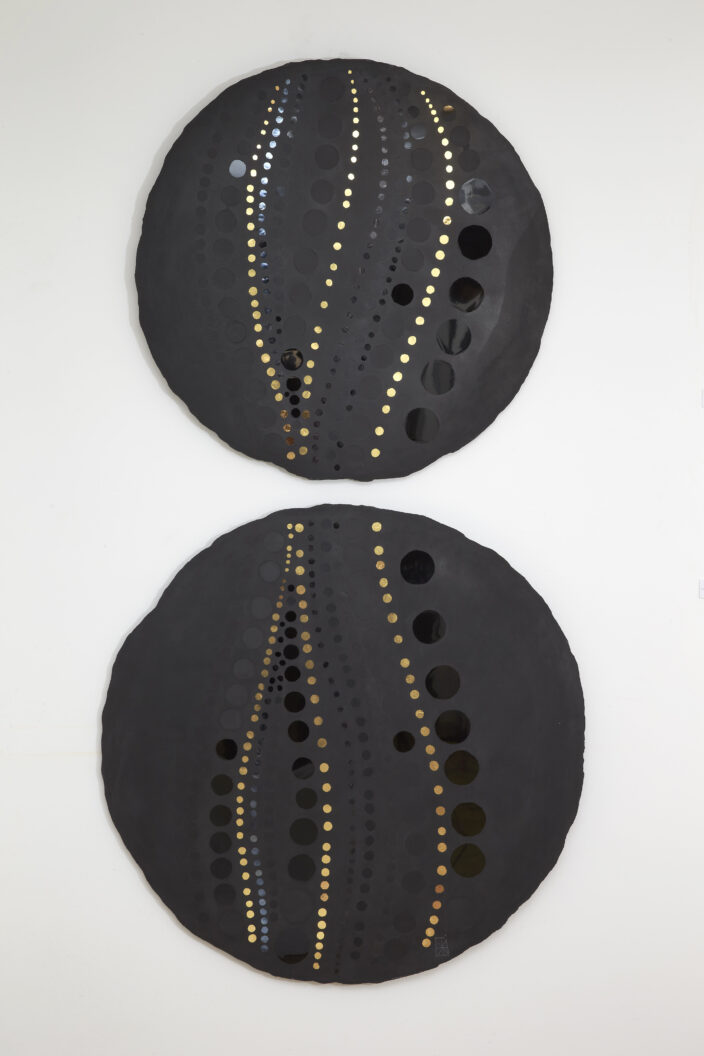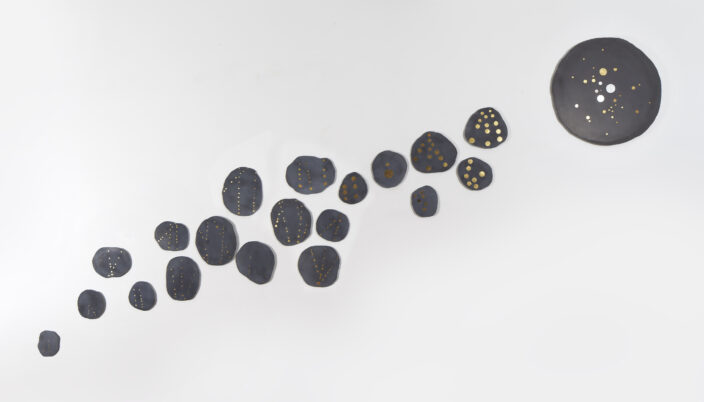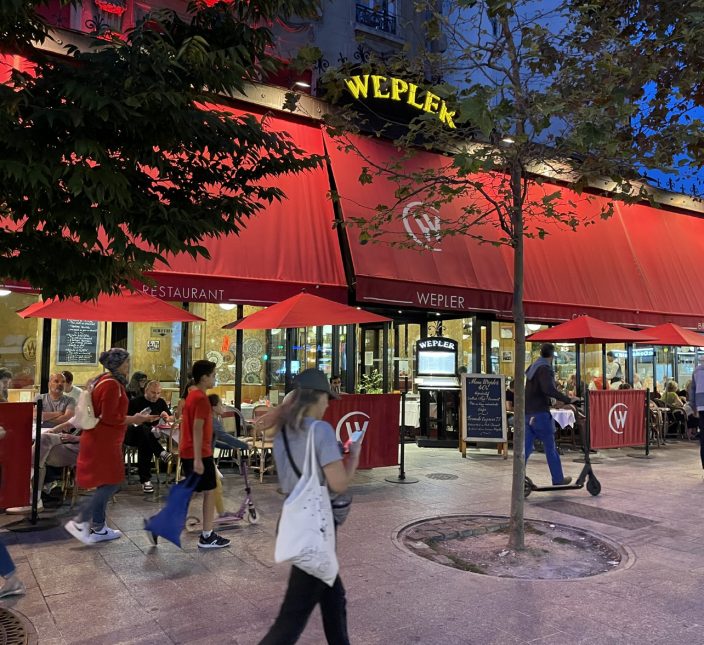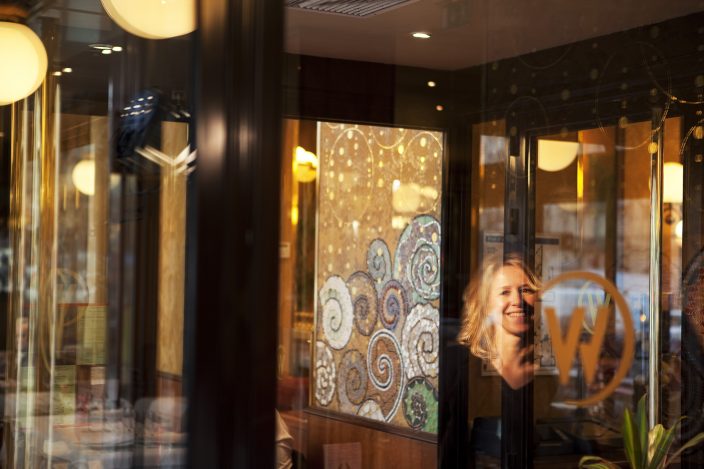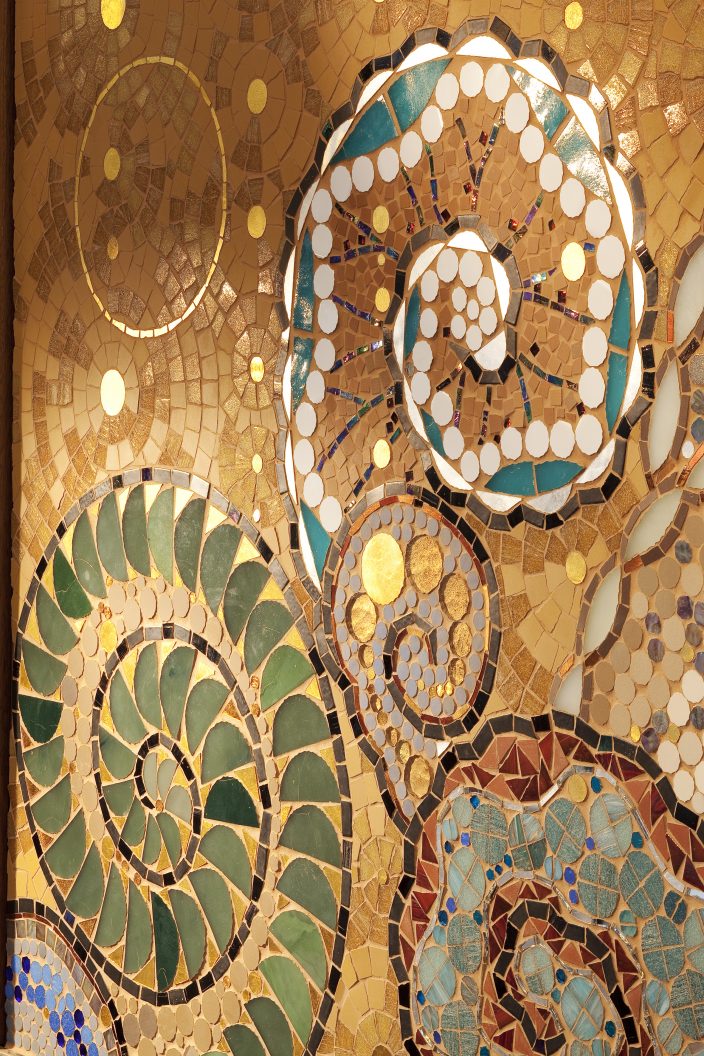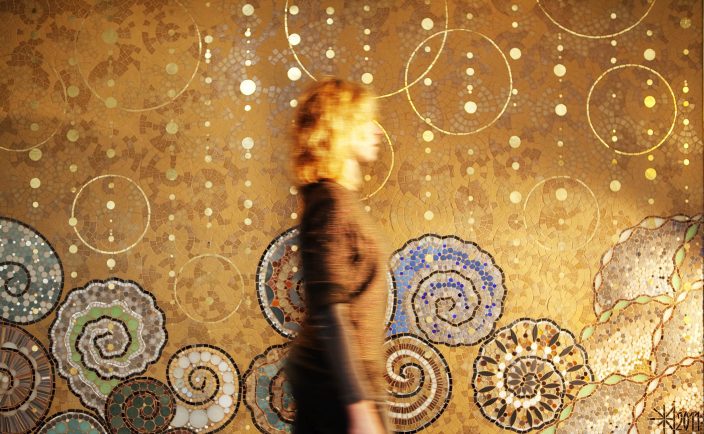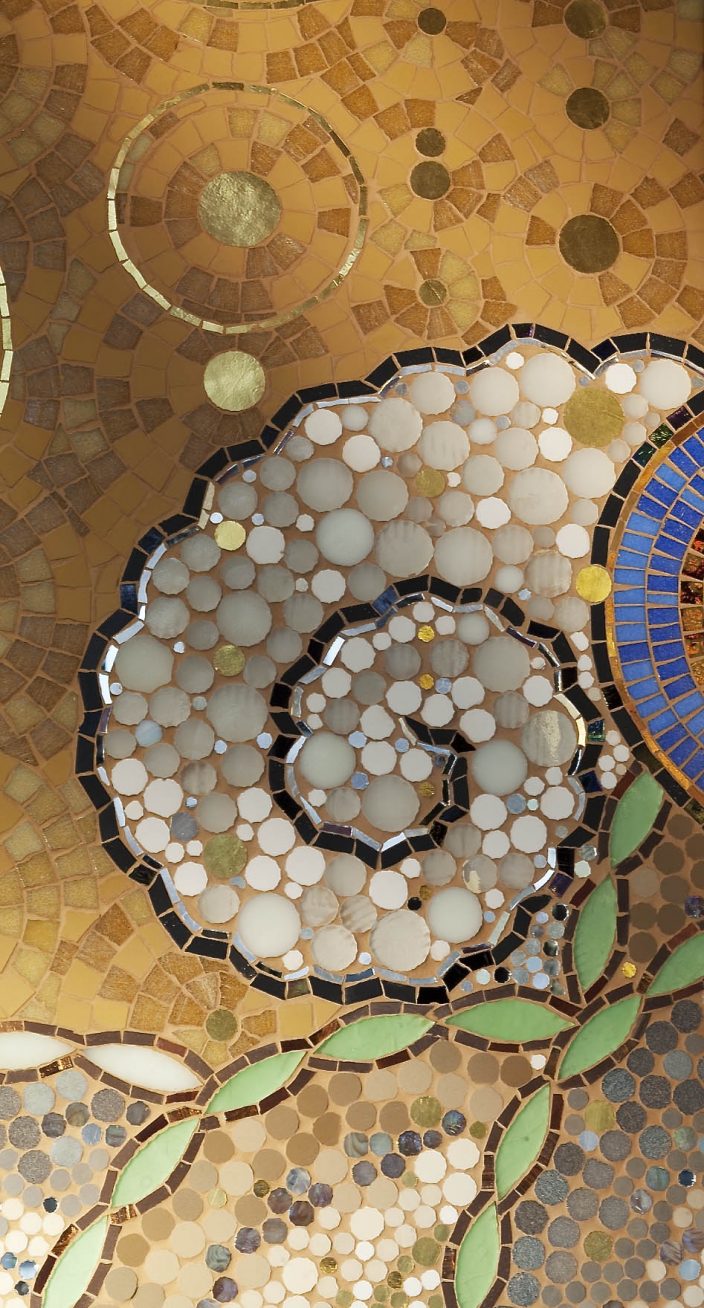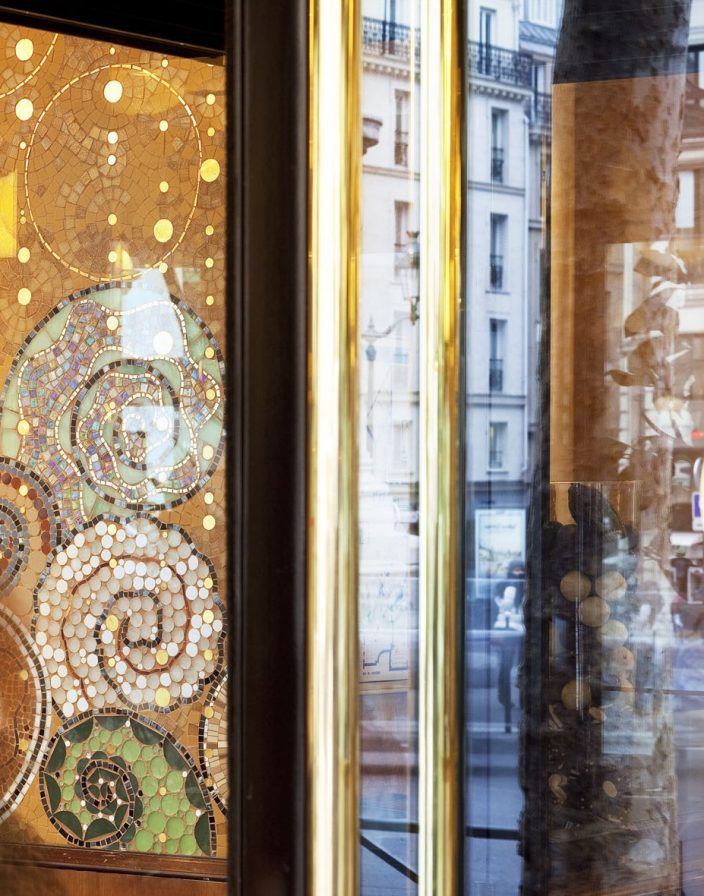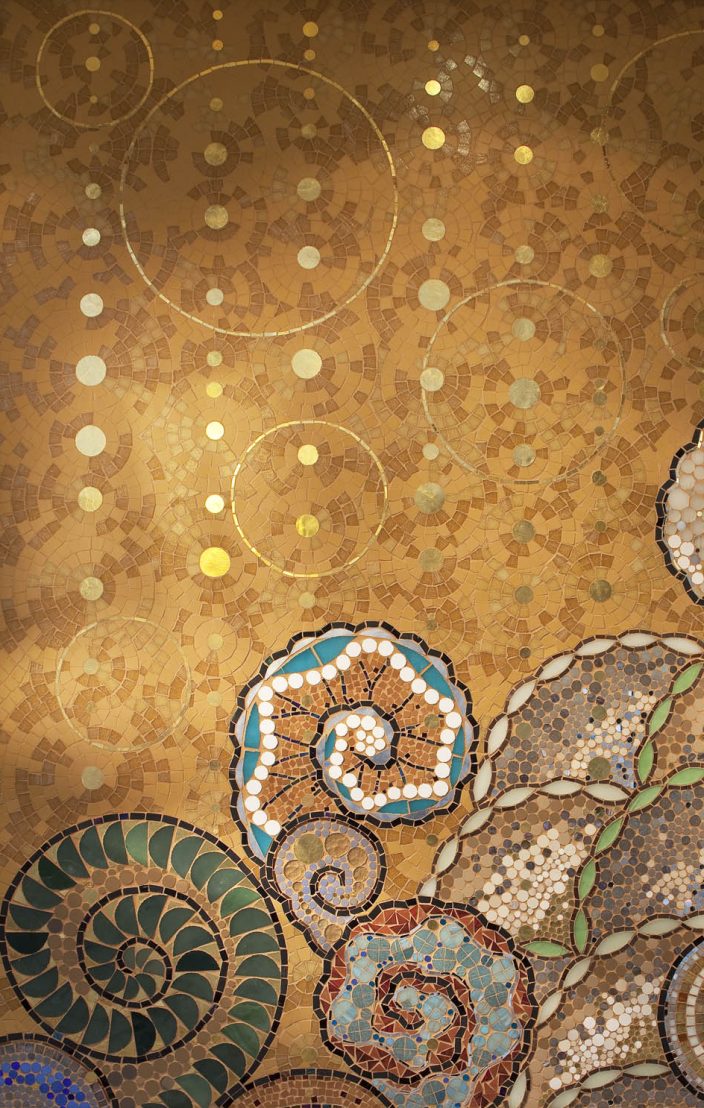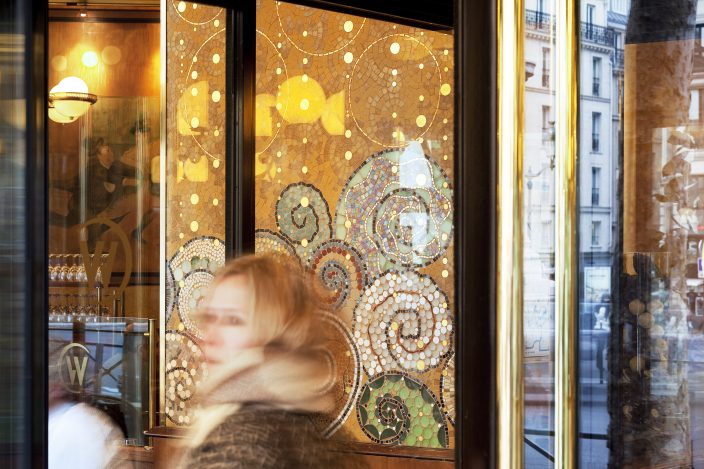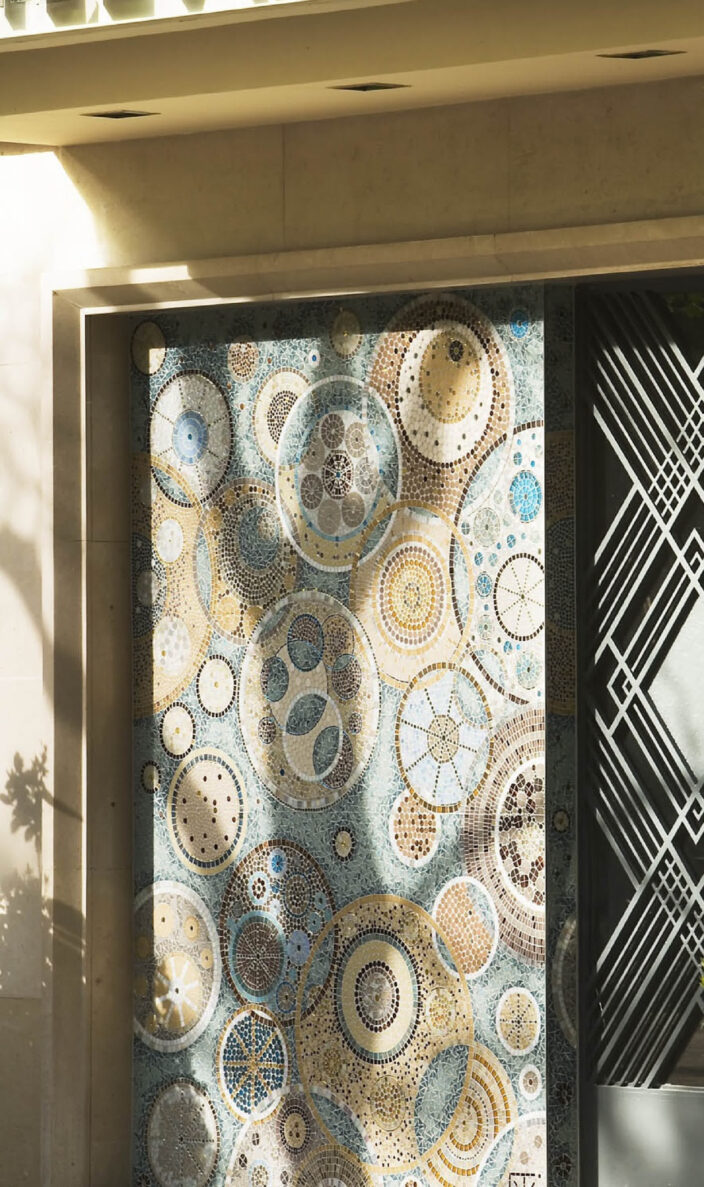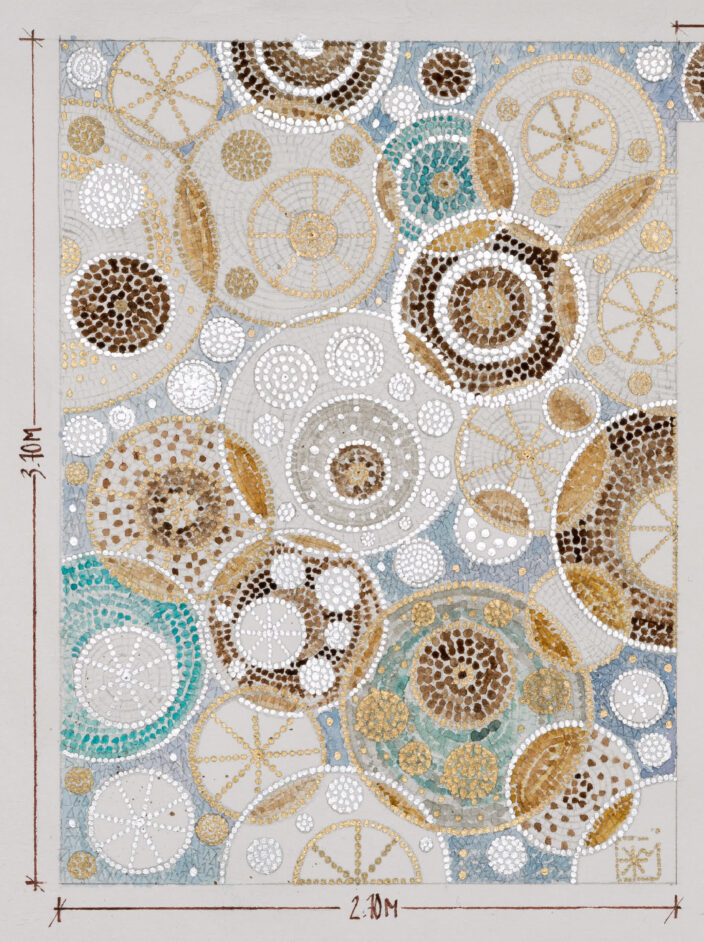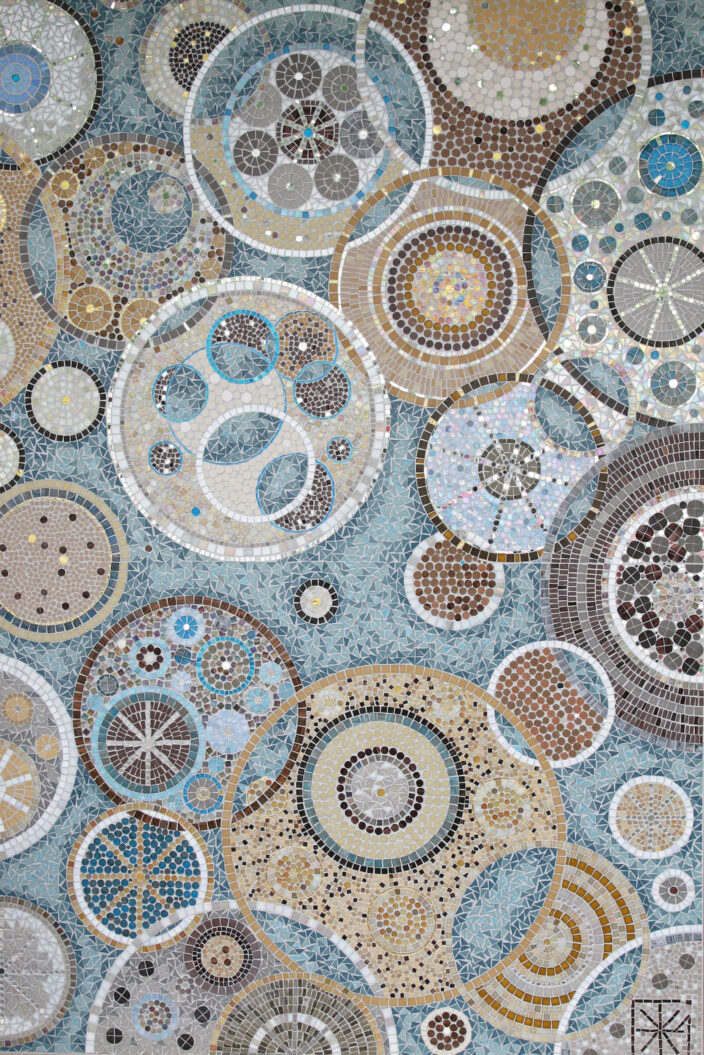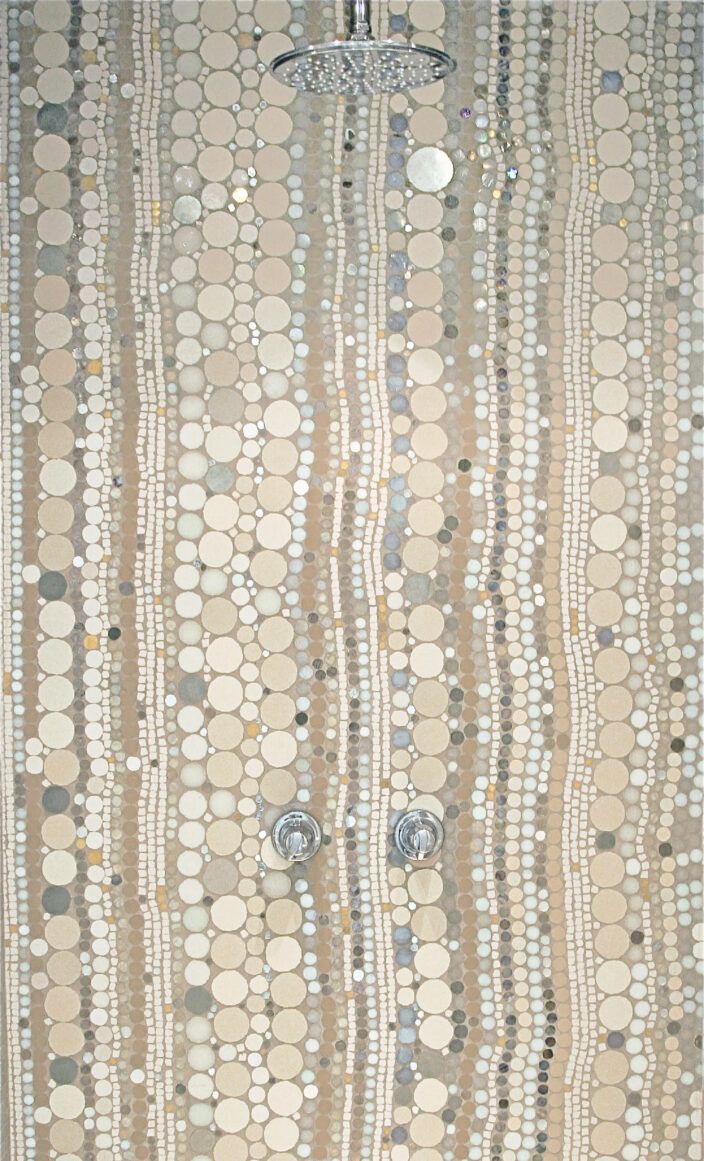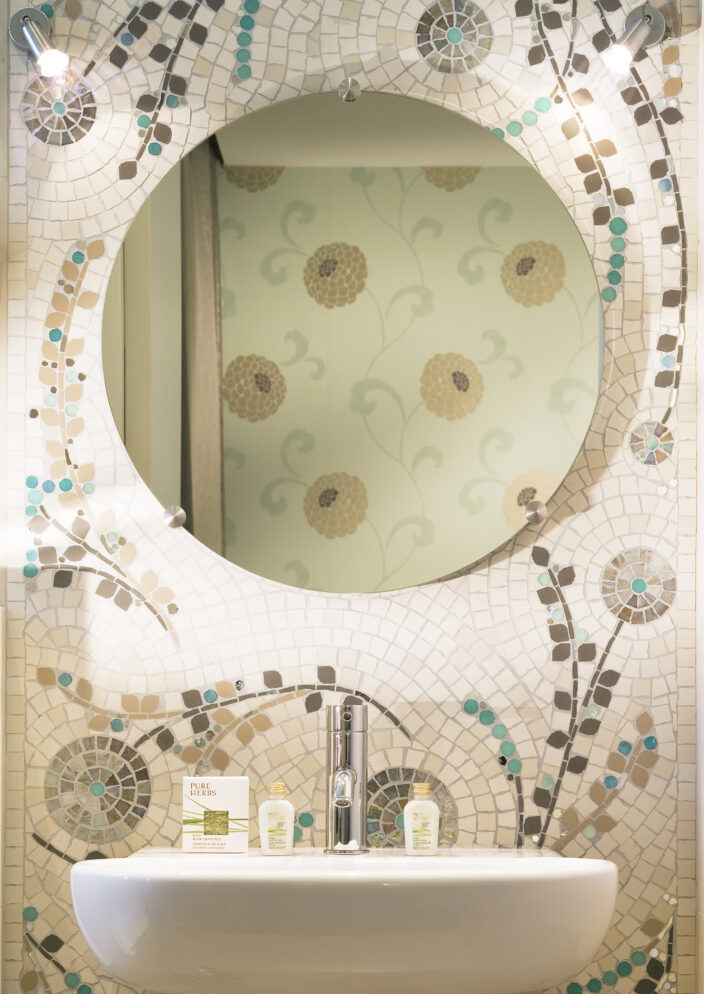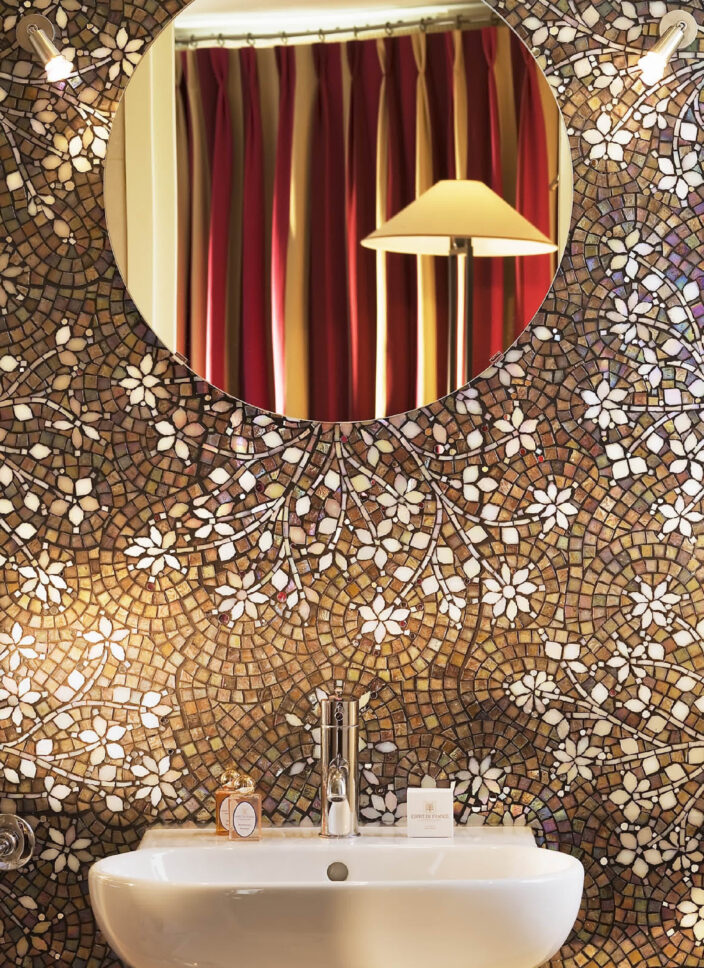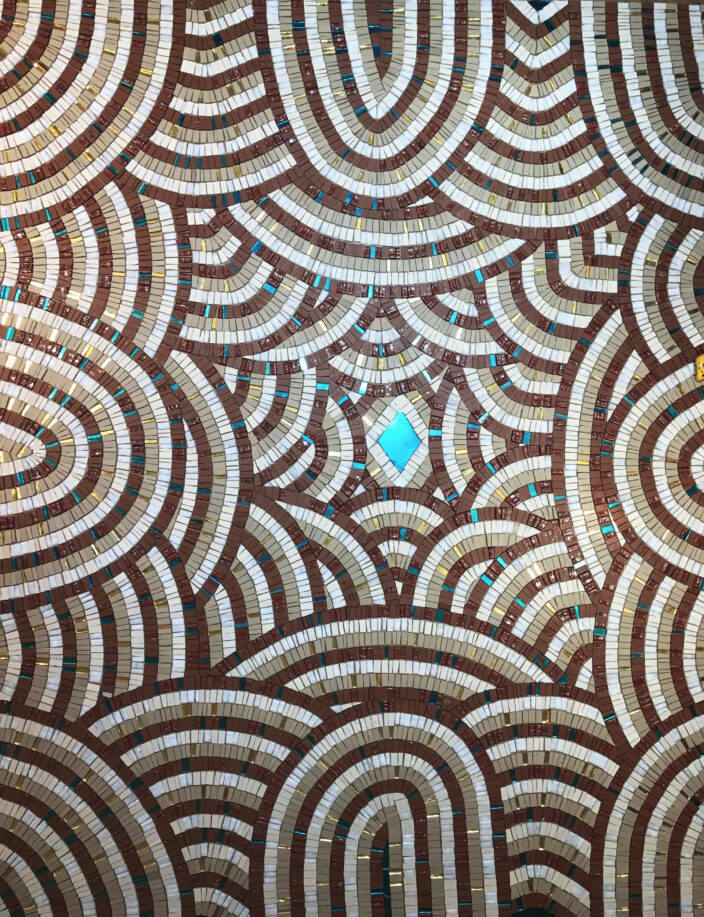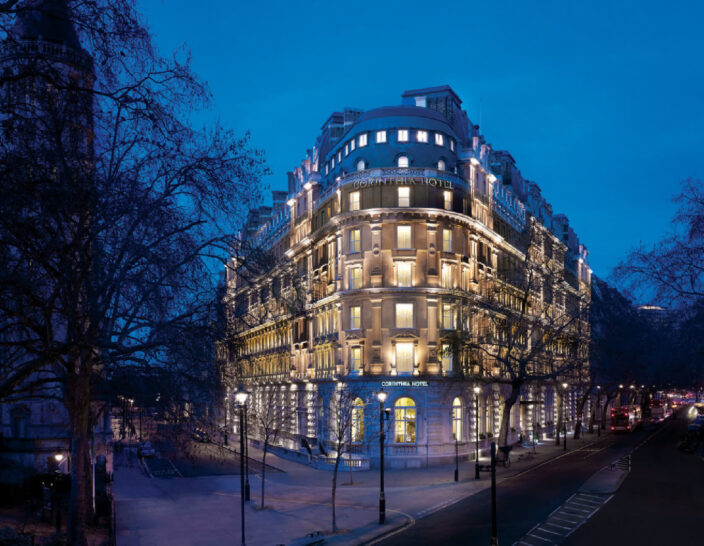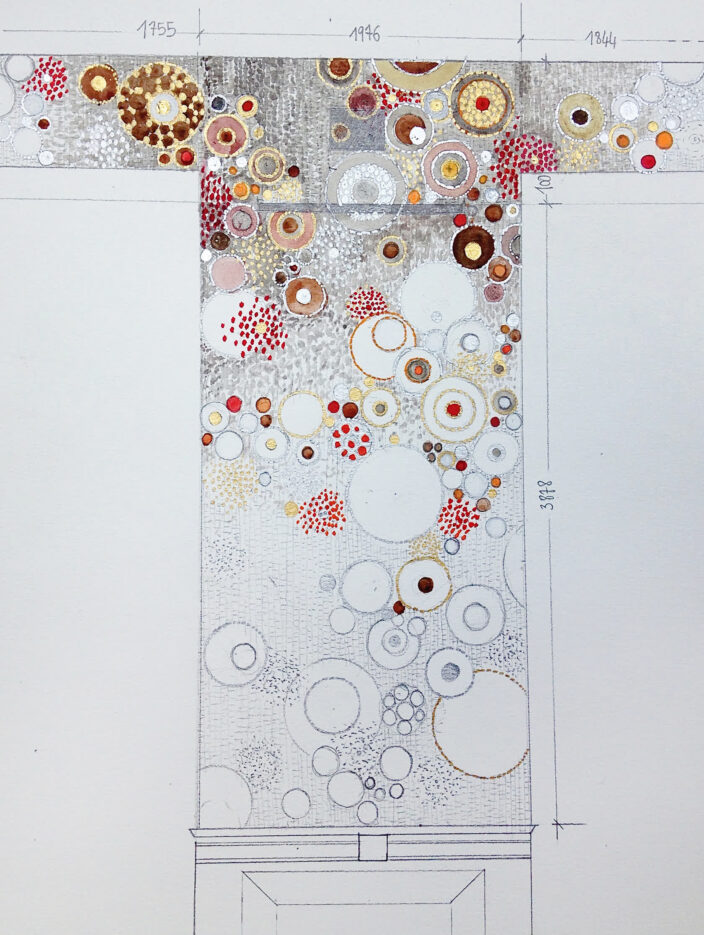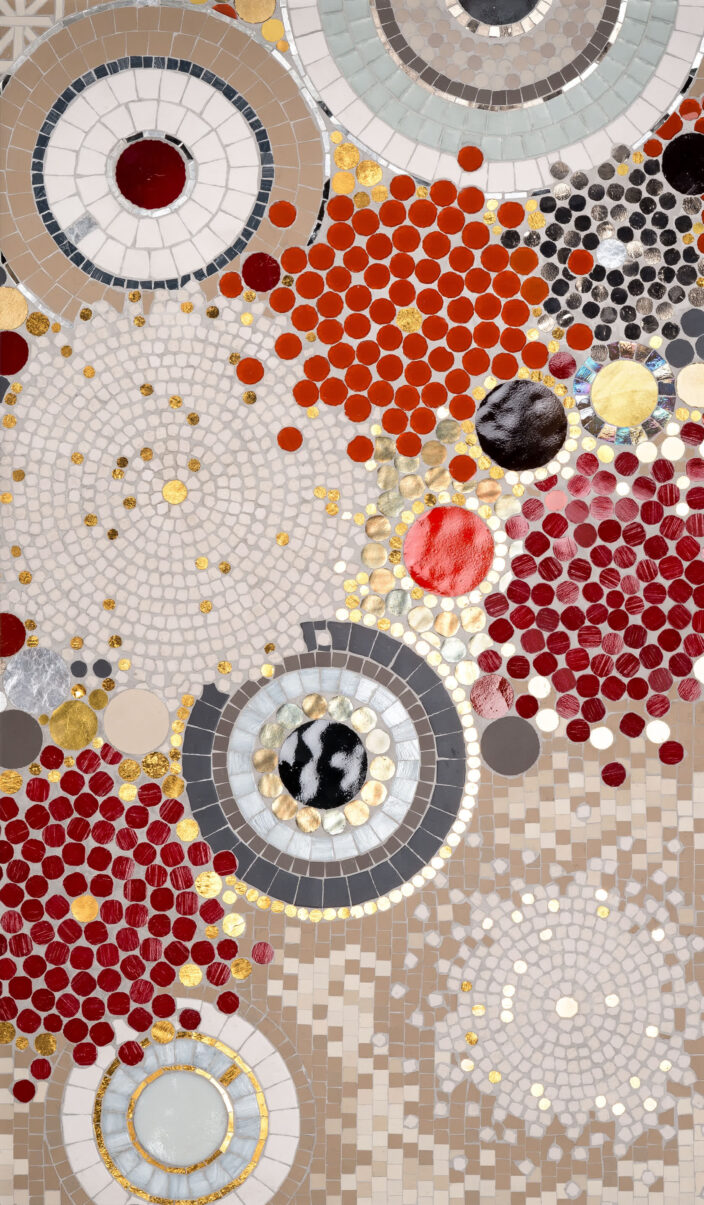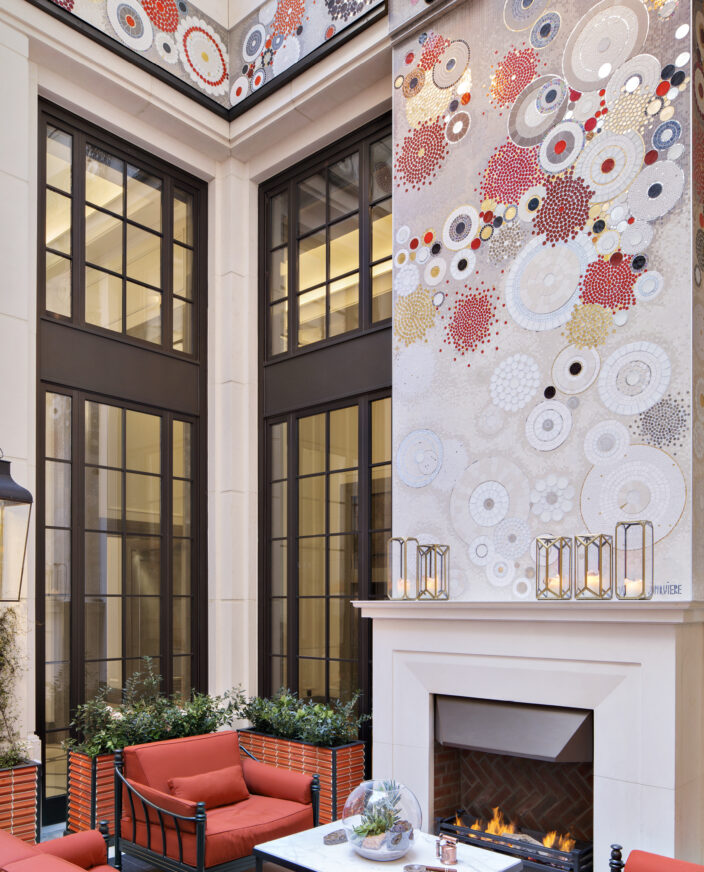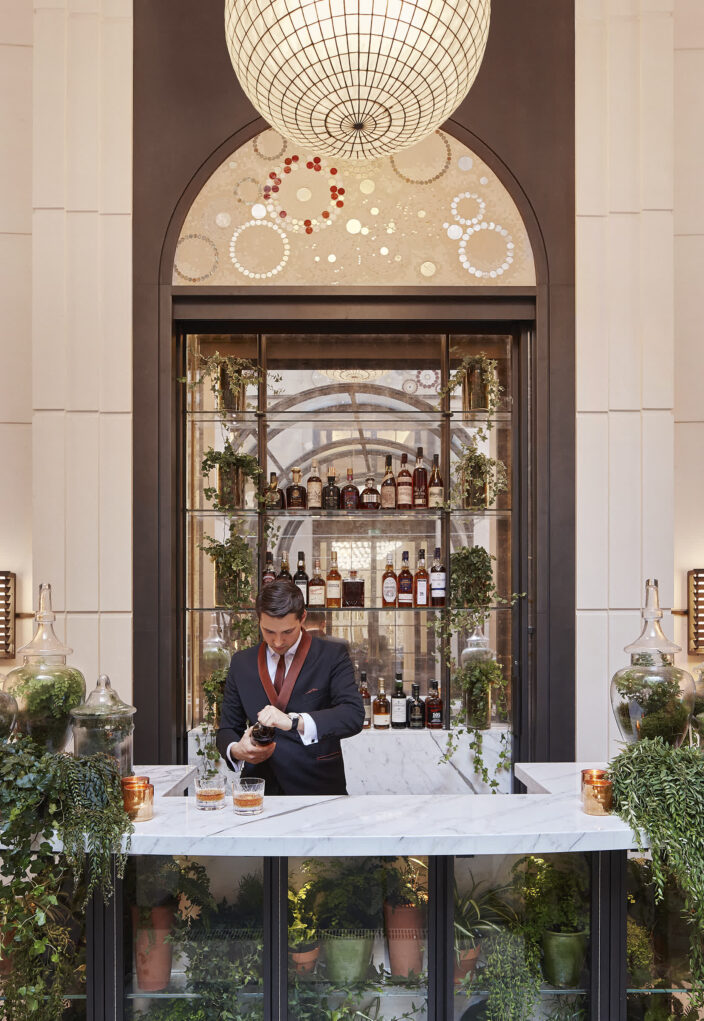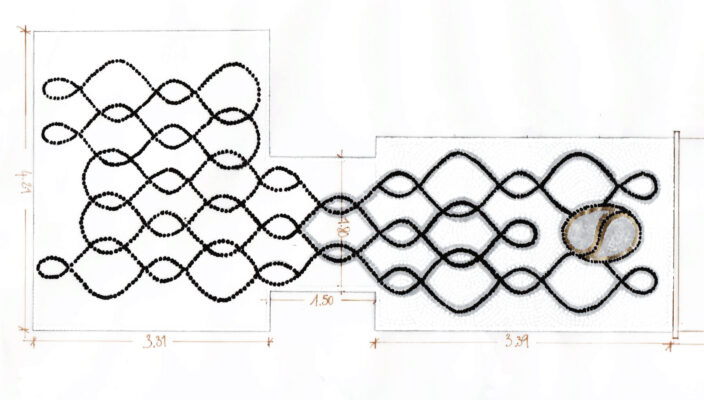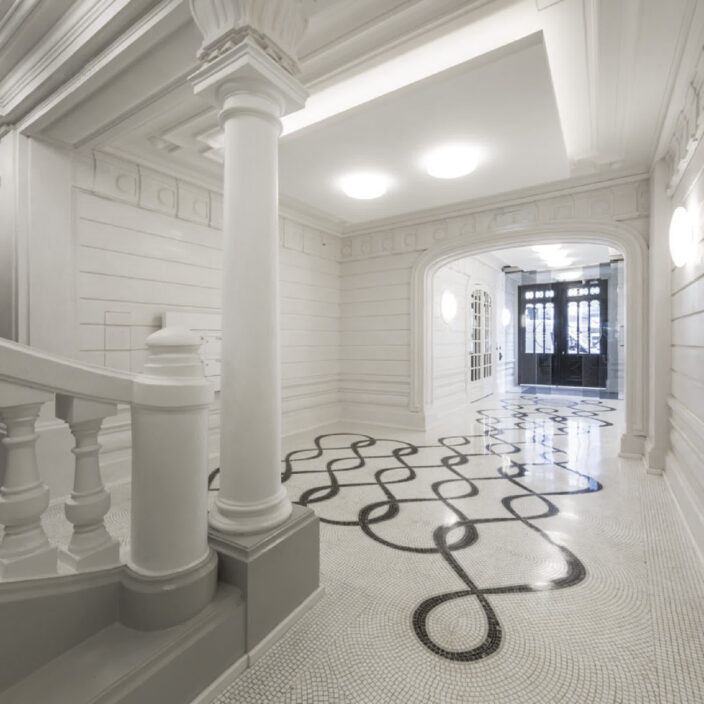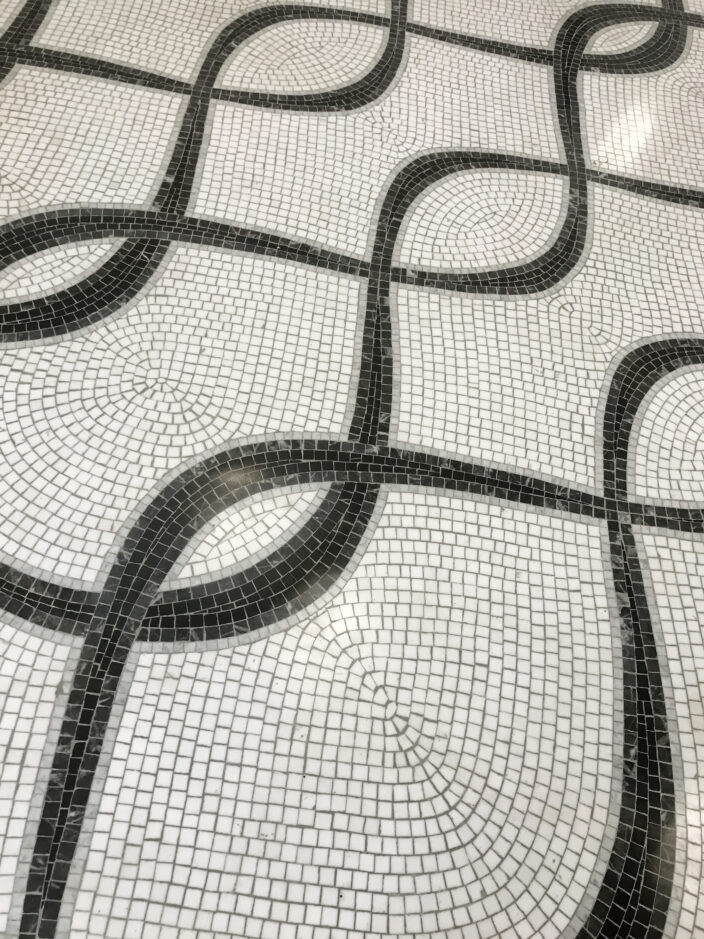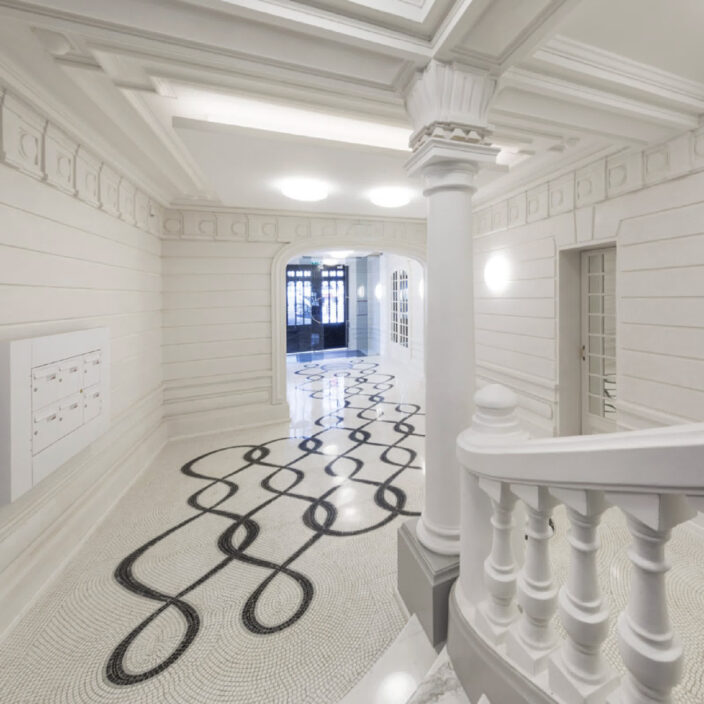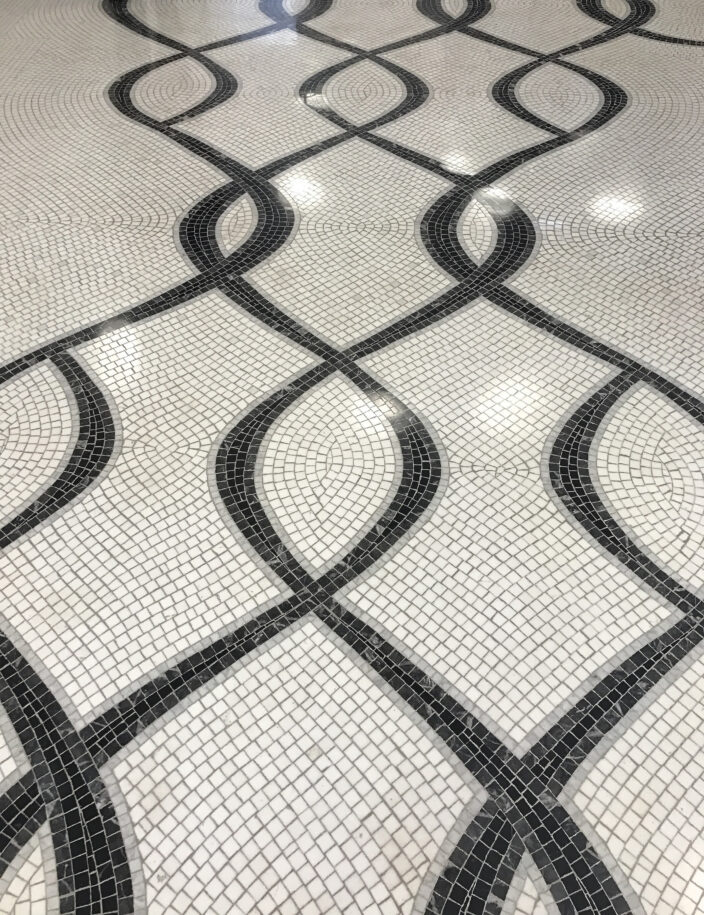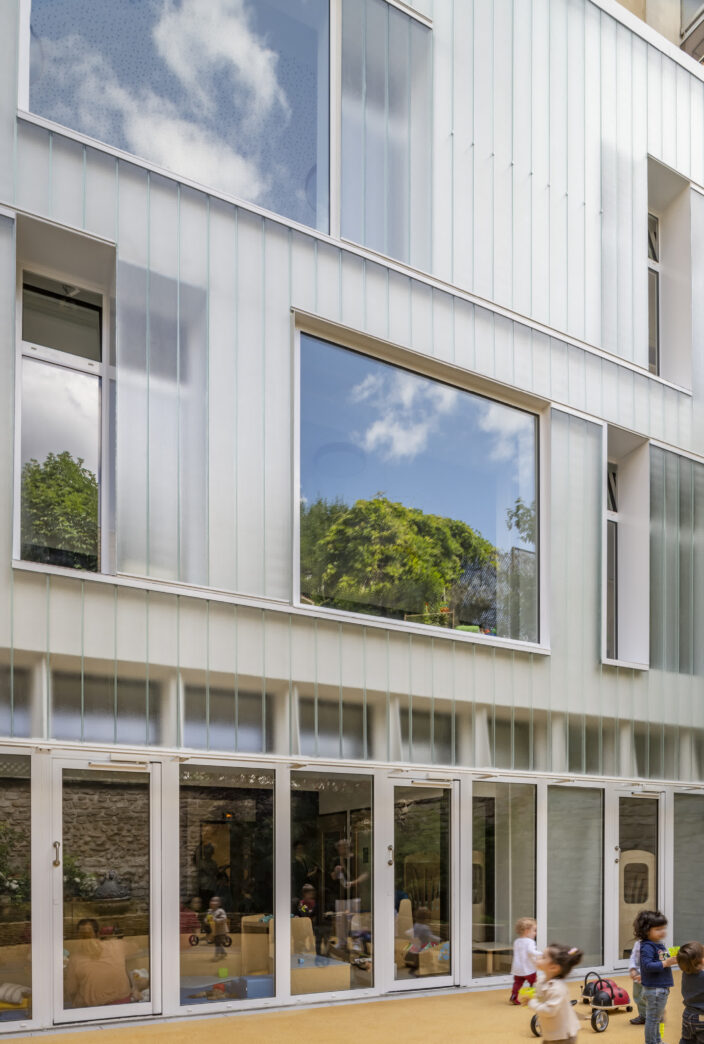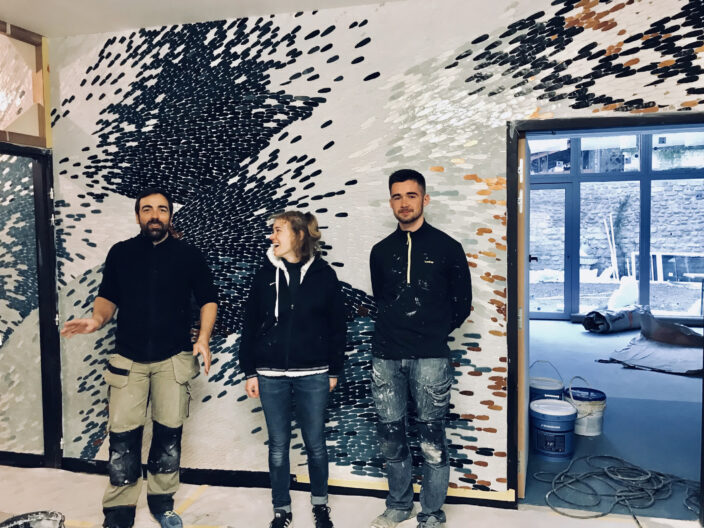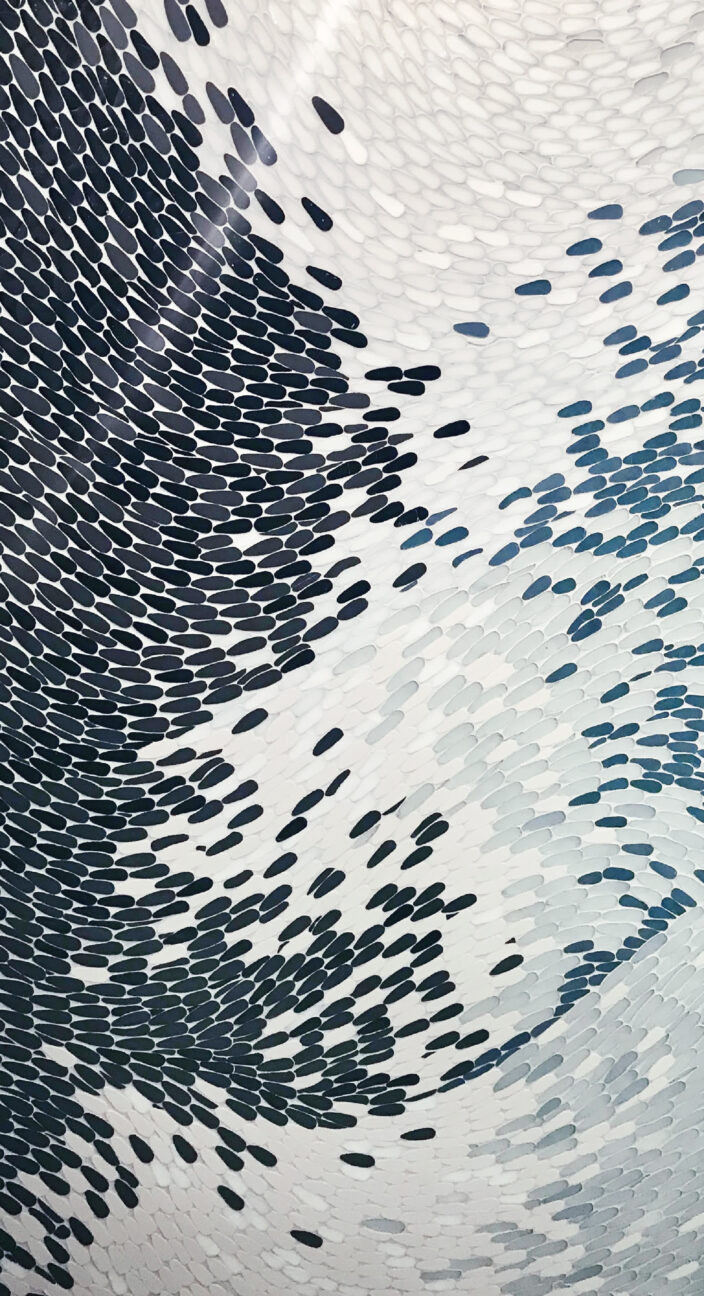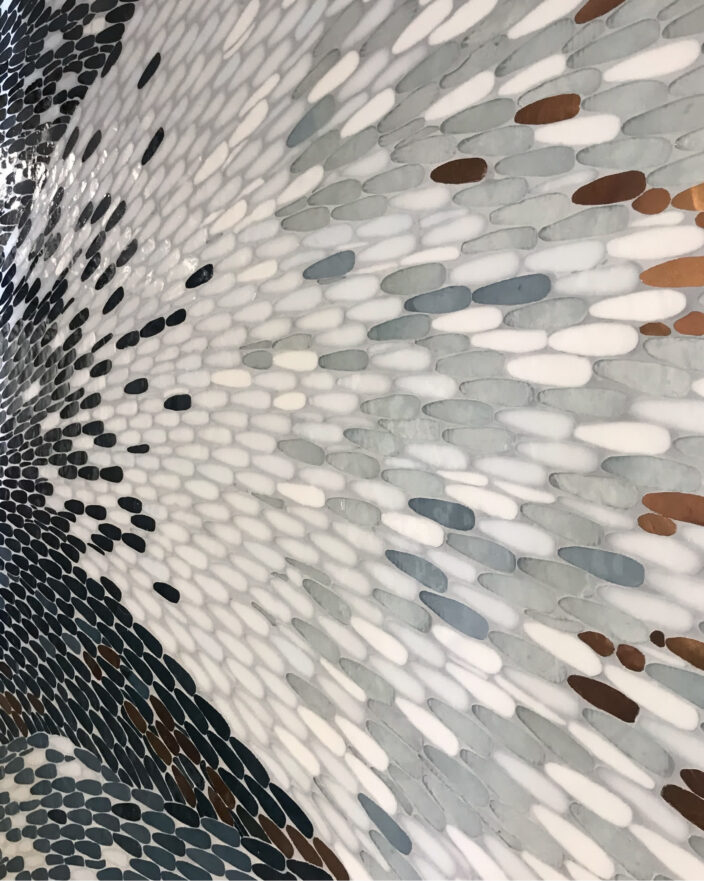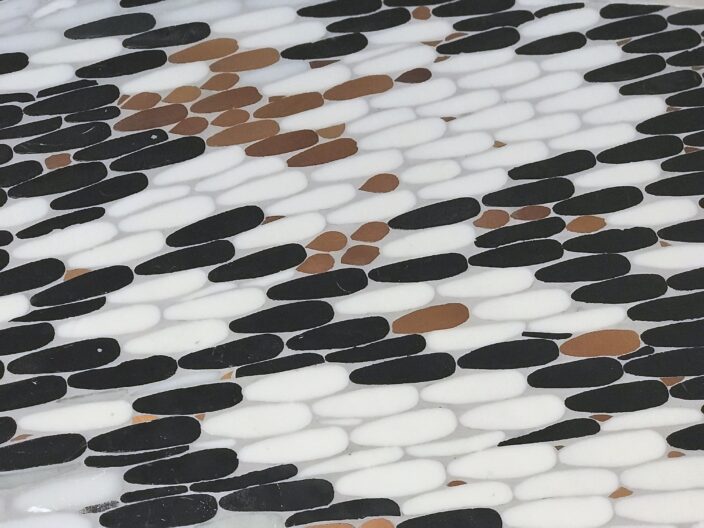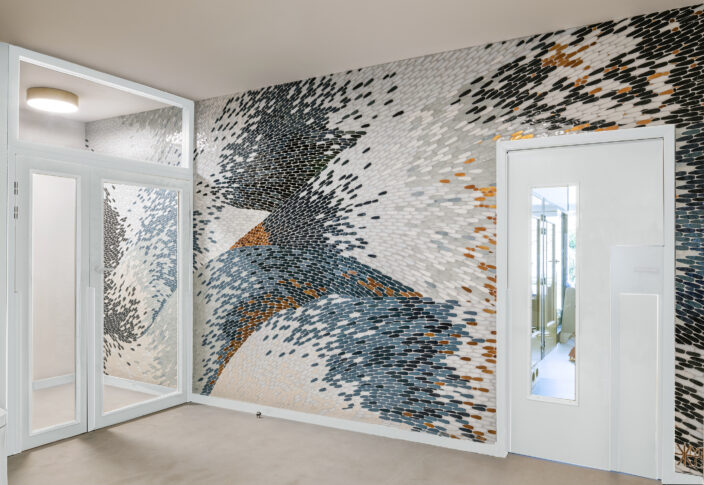Depuis plusieurs années, Mathilde Jonquière fait du béton son matériau de prédilection et révolutionne les canons de l’art de la mosaïque. Détournant les hiérarchies classiques, elle reformule avec détermination le rapport de valeur entre le mat et le brillant, le fade et le coloré, le vide et le plein, le pauvre et le riche.
Au commencement, la mosaïste s’intéresse à ce qui se passe entre les pierres. Elle investit l’intervalle, l’écart, cet entre-deux terne et déclassé. C’est dans cet espace-là que se pose son regard, c’est sur ce matériau qu’intervient sa main : le ciment-joint, mortier prolétaire qui liait entre eux les éléments de la composition, prend alors du volume et gagne de la surface pour devenir un agent de la composition — exactement comme la réserve de la toile joue avec la peinture. A présent, converti en béton, l’interstice occupe le terrain, il entre dans la lumière.
Dès lors, Mathilde Jonquière travaille à subvertir l’usage du béton : elle lui accorde non plus un rôle fonctionnel — socle, support, plateau — mais réaffirme sa nature vivante, multiple, s’attache à en faire une liberté.
Saisi comme un matériau en soi, il s’anime, se déploie, joue de sa plastique, s’arrondit ou fait feu de toute pierre : il inspire, il perle. Loin de s’en tenir à y enchâsser les mosaïques précieuses, la mosaïste étire ses capacités et le pousse jusqu’au bout, dans de grands formats qui sont autant de défis artistiques. Le béton est tour à tour écrin velouté, médaillon de ciel nocturne, étang de l’orpailleur, galaxie-miroir. Il ruisselle comme la pluie le long d’une vitre, bouge comme un tissu dans le vent, éblouit comme le coquillage ramassé au fond de la mer. Accueille aussi bien le cinéma que la photographie, les tissages traditionnels, l’abstraction, la peinture aborigène, les bijoux, trace les constellations célestes.
Les mosaïques de Mathilde Jonquière troublent et déplacent les codes, et finalement à travers elles, c’est aussi l’art de la mosaïque lui-même qui s’émancipe de ses affectations premières — décorer, orner, embellir — pour défricher toujours plus avant un nouveau territoire de création, un domaine à soi. Pionnière, Mathilde Jonquière inscrit la poésie dans ce conglomérat de sable et de gravier, elle enchante le béton. Il est grand temps de fêter ses œuvres.
Maylis de Kerangal
